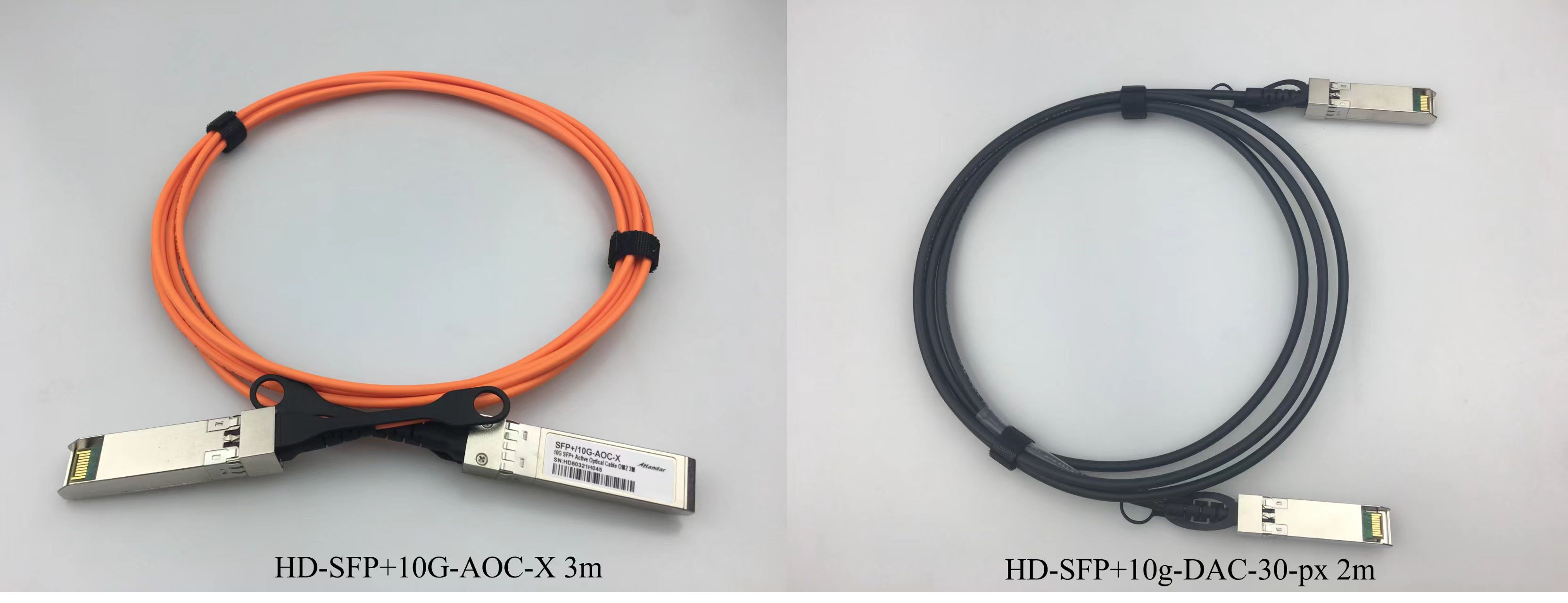Understanding the Differences between AOC and DAC Cables
2023-11-22(1049)views
In the ever-evolving landscape of data communication, the choice of cables plays a crucial role in ensuring efficient and reliable connectivity. Two popular options in this realm are Active Optical Cables (AOC) and Direct Attach Cables (DAC). While both serve similar purposes, they differ significantly in their construction, applications, and performance. Let's explore the distinctions between AOC and DAC to help you make informed decisions in your networking endeavors.

**1. Construction:
AOC (Active Optical Cables):
AOC cables use optical fibers to transmit data. These fibers are encased in a protective jacket, and they leverage optical transceivers on each end to convert electrical signals into optical signals for transmission. The optical transceivers require power to operate, which is supplied through the cable itself.
DAC (Direct Attach Cables):
DAC cables, on the other hand, utilize copper cables for data transmission. The copper conductors are typically twinaxial and are either passive or active. In passive DACs, the electrical signals travel directly through the copper without any signal regeneration, while active DACs incorporate signal processing electronics to boost performance over longer distances.
**2. Performance:
AOC (Active Optical Cables):
AOC cables are renowned for their high bandwidth and low latency. The optical transmission allows for data rates that can exceed those of traditional copper-based solutions. AOCs are often preferred in scenarios where high-speed, long-distance data transmission is crucial, such as data centers and high-performance computing environments.
DAC (Direct Attach Cables):
DAC cables are generally suitable for shorter-distance connections within a data center or between closely located devices. While they offer good performance, their data rates may not match those of AOC cables, especially over extended distances.
**3. Flexibility and Weight:
AOC (Active Optical Cables):
AOC cables tend to be more flexible and lighter than their DAC counterparts. This flexibility can be advantageous in scenarios where cable management is a concern, and the reduced weight can simplify installation and maintenance.
DAC (Direct Attach Cables):
DAC cables, being composed of copper conductors, are typically stiffer and heavier than AOC cables. This may be a consideration in situations where cable flexibility and weight are critical factors.
**4. Cost Considerations:
AOC (Active Optical Cables):
AOC cables are often considered a premium solution, and they can be more expensive than DAC cables. The higher cost is justified by their superior performance and suitability for specific high-demand applications.
DAC (Direct Attach Cables):
DAC cables are generally more cost-effective than AOC cables. They provide a reliable and affordable option for shorter-distance connections where the exceptional performance of AOC may not be necessary.
Conclusion:
In the choice between AOC and DAC cables, the decision ultimately depends on the specific requirements of the networking environment. AOC cables excel in scenarios demanding high bandwidth, low latency, and extended reach, while DAC cables offer a more economical solution for shorter-distance connections. Evaluating factors such as performance needs, budget constraints, and installation requirements will guide you toward the optimal choice for your data communication infrastructure.
Latest News
-

Spring Festival Holiday Notice
Dear Valued Customers and Partners,As the Spring Festival ap...
-

What is Sora, and what new impact will it have on the intelligence field?
Sora AI, a groundbreaking system, revolutionizes video creat...
-

Whandar 2024 Spring Festival Holiday Notice
SFP supplier in Shenzhen
-

Understanding the Differences between AOC and DAC Cables
We aremanufacturers of optical module,fiber optic transceive...
0755-86654236
Phone:0755-86654236
Telephone:
Fax:0755-86654231-869
Email:[email protected]
Address:4th Floor, Building 4, Xusheng Xifa B Industrial Zone, Yintian Gonghe Industrial Road, Xixiang Town, Baoan District, Shenzhen



 0755-86654236
0755-86654236